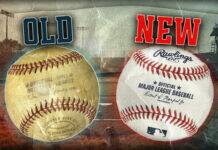Baseball has always loved its mythology, but no figure challenges your understanding of heroism and villainy quite like Barry Bonds. His 762 home runs and seven MVP awards represent the statistical Mount Everest of baseball achievement—a summit so high it distorts perception of what’s possible. Yet like a blockbuster movie with a controversial ending, Bonds’ career leaves audiences divided, arguing passionately about whether to applaud or condemn what they witnessed.
The Prince of Baseball Royalty
Born in 1964 to All-Star Bobby Bonds and with Willie Mays as his godfather, Barry entered the world with baseball’s equivalent of royal blood. Growing up in Riverside, California, he inherited not just genetic gifts but also a front-row education in the game’s highest levels.
At Serra High School, his talent emerged with such clarity that the Giants drafted him in 1982, though he opted for Arizona State University instead. When the Pittsburgh Pirates selected him sixth overall in 1985, it felt less like a draft pick and more like a coronation.
Pittsburgh’s Reluctant Superstar
The Pirates quickly installed Bonds in center field, where his rookie campaign showcased a player who could do everything—get on base, steal bags, and flash leather. Between 1986 and 1989, Bonds evolved from promising prospect to complete player, combining power and speed in ways that made scouts’ clipboards tremble.
By 1990, he’d moved to the heart of Pittsburgh’s lineup and claimed his first MVP award, establishing himself as baseball’s most dangerous weapon. Here’s the kicker: even without a single post-2000 home run, Bonds’ first 15 seasons produced a .290/.411/.559 slash line with 445 homers—numbers that dwarf most Hall of Famers’ complete careers.
October’s Cruel Paradox
For all his regular-season brilliance, Bonds transformed into a different player when the calendar flipped to October. His first three postseason appearances revealed a superstar suddenly mortal, his bat seemingly filled with sawdust rather than thunder.
Even after securing his second MVP in 1992, the Pirates’ championship hopes collapsed in the NLCS. His postseason batting average hovered below his regular-season numbers, creating the first major crack in his legacy. Pittsburgh fans, who had embraced his excellence, now questioned his ability to deliver when the lights shined brightest.
Homecoming King
The Giants’ courtship of Bonds offered both financial windfall and poetic symmetry—a six-year, $43 million contract that brought him to the city where his father had starred. San Francisco, coming off a disappointing season, needed transformation.
Bonds delivered immediately, leading multiple offensive categories and propelling the team to dramatic improvement. His third MVP trophy that year—his second consecutive—suggested he had found his perfect baseball home. You could sense the electricity in Candlestick Park whenever he stepped into the batter’s box.
The Wilderness Years
After initial success, the Giants wandered through unexpected hardship. The player strike disrupted momentum, and the team tumbled to the division cellar for two consecutive seasons. A brief revival in 1997 ended with playoff disappointment, while an elbow injury in 1999 sidelined Bonds.
These middle years of his San Francisco tenure resembled the middle episodes of a prestige TV drama—necessary for character development but lacking the spectacular moments that defined the beginning and end. You watched a superstar navigate the humbling reality that even the greatest players can’t control everything.
The Transformation
The 2000 season marked Bonds’ resurrection, his numbers soaring to heights that demanded attention. What followed in 2001 broke baseball’s understanding of what one player could accomplish. His 73 home runs shattered Mark McGwire’s record, while his 1.379 OPS that season remains untouchable—the closest anyone has come since is 1.222.
Consider this absurdity: Bonds walked 232 times in 2004, more than most players see pitches to hit in a season. Pitchers literally refused to compete against him, creating a statistical anomaly that makes traditional analysis nearly impossible.
The BALCO Shadow
As Bonds’ statistics ascended to unprecedented altitudes, questions multiplied about the methods behind his midcareer metamorphosis. The BALCO investigation cast a long shadow over his achievements, connecting his trainer to performance-enhancing substances. His grand jury testimony, in which he denied knowing steroid use, later became the foundation for perjury and obstruction of justice charges.
Though convicted of obstruction in 2011, he was ultimately exonerated on appeal in 2015. The physical changes in his body—more muscular, more imposing—provided visual evidence that something fundamental had changed since his Pittsburgh days.
Defying Gravity
Even as controversy swirled around him, Bonds continued producing numbers that defied baseball logic. His 2004 season might represent the most complete offensive performance in history, leading nearly every meaningful category. This four-year stretch of dominance stands unmatched in modern baseball—a player seemingly operating outside the game’s established boundaries.
Few athletes have maintained such excellence while navigating similar scrutiny, making his performance during this period both more impressive and more complicated. You witnessed greatness intertwined with questions that refused to disappear.
The Lonely Summit
The home run record, baseball’s most revered milestone, beckoned Bonds as his career progressed. After accumulating 445 homers through 1999, his power production accelerated dramatically in the new millennium. When he surpassed Hank Aaron’s mark of 755 in August 2007, the moment arrived with conflicted emotions throughout the baseball world.
His final total of 762 home runs secured his place in the record books but with an asterisk that exists not on paper but in the collective consciousness of fans. You could feel the tension in ballparks as history unfolded before uncomfortable audiences.
Baseball’s Uncomfortable Goodbye
Even in his final season, the 42-year-old Bonds performed at levels most players never reach in their prime, leading the league in on-base plus slugging while maintaining a solid batting average. Yet when the season ended, no team offered him a contract—not even at a reduced rate or in a limited role.
His career concluded not with celebration but with awkward silence, the sport seemingly eager to move beyond its complicated relationship with its home run king. You watched baseball turn its back on arguably its greatest player, prioritizing public relations over production.
The Cooperstown Question
The Hall of Fame debate surrounding Bonds resembles a philosophical seminar more than a baseball discussion. Voters have consistently rejected candidates connected to performance enhancement, leaving Bonds short of the 75% needed for induction despite his staggering statistics. This has created a shadow wing of statistical giants who remain outside Cooperstown’s walls.
The fundamental question involves whether you can—or should—separate achievements from their context. Here’s what the numbers wonks won’t tell you: strip away every post-1999 stat, and Bonds still accumulates 99.6 career WAR through age 35—higher than Willie Mays, Hank Aaron, or Mickey Mantle at the same age. Yet, his 2001-2004 peak coincided perfectly with BALCO, creating an impossible puzzle. Did steroids transform a Hall of Famer into a baseball deity, or did they merely extend the career of someone already operating on a different plane?


